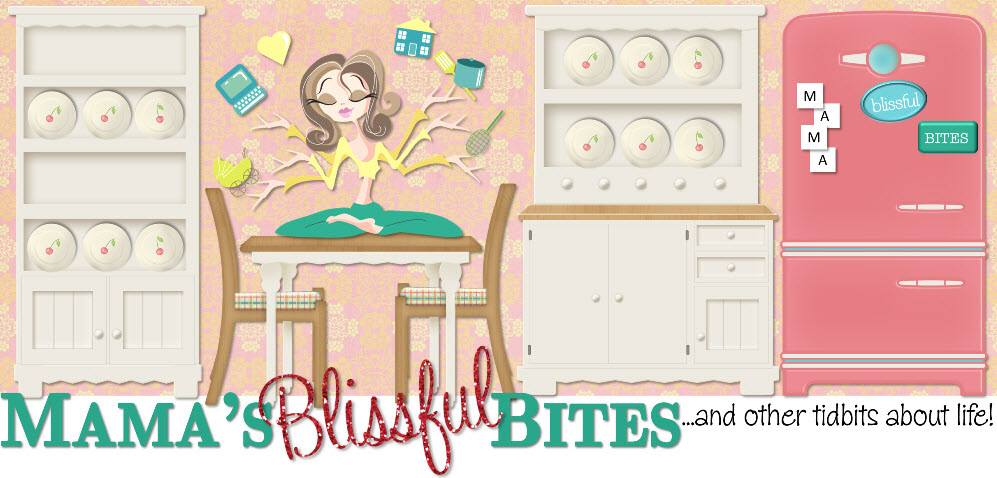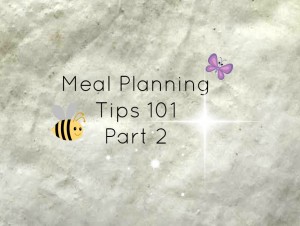Two of my favorite topics are meal planning and grocery shopping. Let’s face it, if you go shopping without a plan, it can be overwhelming and every sight can be tempting. But since you are prepared and fully in control of your healthy shopping list, you have now become a smart shopper. How did you become prepared? Easy, you took some tips from Meal Planning Tips 101, Part 1.
We already discussed how to plan your meals by:
- Saving time
- Saving money
- Making a systematic process that works well with your schedule
Now I want to share my tips so you can:
- Learn how to prepare your list
- Where to post your second list
- When to shop
After you have a full weeks menu (including breakfast, lunch and dinner) you will need to prepare your shopping list. There’s always two ways of doing this.
Suggestion #1
A lot of grocery stores offer a delivery service from the store directly to your home.
There are many advantages to this service:
- Ideal to use service if you are on a tight schedule and can’t find time to shop
- Ideal to select exactly what you want and nothing more. Meaning, you save money.
- You never have to leave your house. You can shop in the convenience of your pajamas if you wanted to.
- The fee is usually low
There are many disadvantages to this service as well:
- The low delivery fee may cost more than your gas to get to the actual store and back. The store close to me offers this service for $10.00.
- Tipping. Although not “mandatory,” you would tip your delivery person as well.
- Not all items can be available. Only select items are available for delivery.
- Minimum delivery charge. Some stores require a certain purchase amount to be delivered.
- The prices are not the same as in the store. You may pay a higher price for the same “orange” because it was delivered.
Suggestion #2
Write down your items the old fashion way, get in your vehicle and shop! I personally prefer this method. By physically being at the store, I can see new items that are available and have flexibility in choosing organic vs. conventional or an off brand vs name brand.
If you chose to make a list, you can always use the computer or write it on paper. I love to hold a piece of paper with my handwriting but that’s just me. What you don’t want it a disorganized list with sloppy handwriting that you question when you’re at the store. Shopping is about being efficient and effective. You want to know what items you need, get in and out. Studies have shown the longer you are in a store, the higher your chances are of purchasing more than what you intended to.
My goal is to help you become a smarter shopper, lingering is not only wasting your valuable time but may also cost you extra money.
Besides creating a shopping list, I recommend on making a second short list. That’s right, list number two. When I sit to write down my shopping list, I tare off an extra piece of paper and write down the title of the recipes. This sheet of paper is placed in my refrigerator and replaced weekly. At a glance, I can tell what I have for that week and if I need to alternate dishes due to pressed time. I always make a pizza because it’s easy and saves time. I use it on those nights that I don’t feel like cooking or need to make something in a pinch. Creating a second list that is easily visible is a quick way to know your menu options.
There are rules or guidelines that I like to give my clients. Here are a few:
Rule #1
- Know your store.
I cannot stress that enough. I’m not the person who shops at three or even four different stores to find the best deal however I do shop at the store that will overall save me money. I know that store A sells almond milk for $2.99 but my favorite store that I shop at for all my grocery needs sells it for $3.49. Why don’t I go to store A? Because it will cost me that much in gas just to get there. It’s not worth it. Besides that, I also know that Store A has organic milk for $6.79 where my store sells it for $5.99. Find the grocery store that will win you over with the majority of savings and offers high-quality food. Look at the big picture. Check the prices and remember them.
You also want to know where all your food is at. I mean really know where you are going. Pretend as if you are a worker and stocking the shelves. Even the items you don’t normally use. For example, I know where cactus leaves are and how much they cost ($3.99/lb) and trust me, I don’t think I will ever purchase them. Why should you know this? Because the consumer NEEDS to be a smart, savy shopper and I know that is you!!! Knowledge means saving money and time!
Rule #2
- From this weeks saved menu, run through the ingredients and create that weeks list.
Scroll down all seven recipes (or more depending upon if breakfast, lunch, snack is included) and write down all the ingredients that are needed. I strongly suggest to know what you have stocked in your pantry before hand. (Don’t worry, I’m going to cover a post on stocking your shelves as well. Look for it soon!) This means you know exactly what you have in your refrigerator and pantry prior to shopping. A lot of food and money can be wasted by having double or triple the item when it’s not going to be used. Save money!
Rule #3
- Write your list according to aisle
You don’t need to know that pasta can be found in aisle 11B, but you have a pretty good idea that it’s at the end of the store, right? Precise aisle number is not necessary but knowing the general area will be. For example, I write my list according to the selections as soon as I walk in the door. My list has four chambers. I make a big lower case “t” and they are in four different quadrants. The left quadrant is for produce (the first aisle I see when I walk in), 2. (top right) is for dairy 3. (bottom, left) is bread/meat 4. (bottom, right) is for processed with frozen last. I write it out this way because this is how my grocery store is set up. I start with my produce list (directly reading downward) I enter into the meat department followed by the bakery. Then heads towards number 2 (because I read down lists and not from left to right) and go into dairy followed by processed.
Advantages: You know exactly what you need quicker. If your list is out of order, you will find yourself walking in circles wasting time and possibly spending more money because you may be intrigued to check out other items. Stick to the list. Stick to the aisles!
When should you shop?
Easy, when it’s convenient for you, but here’s some extra information you may want to consider.
Don’t shop on Saturday. New sale prices usually start on Sunday’s and by Saturday all the “good” stuff is picked over. You know, all the items that were discounted are probably gone and the left overs are just waiting with their hands up. You won’t find the best selection on produce because everyone else probably picked it over. Try to skip out on Saturday if you can.
Do shop on Sunday or at the beginning of the week. This is a tricky one. Sunday’s can be mobbed with people. Why? All the new sales of course! Some stores even offer samples. I have to be honest, my favorite day to shop is Sunday. I enjoy the samples but not every Sunday can I take a three hour tour. I still get a great selection on produce and the new sales but I shop in the evening. Who on a Sunday evening wants to go shopping? Not a lot of people let me just say, this is why it’s also a great time to go. Between 11am-3pm (in my hometown) it’s jammed packed. Save yourself the hassle and go later in the day or earlier in the week, say Monday or Tuesday.
Extra Tip: Bring recyclable bags! You can organize your food – pantry vs refrigerator, freezer vs refrigerator, snacks vs main foods in the bags. Do you know how much time this saves?! I can hand off a bag and know my husband and I will not bump into each other if he’s in the pantry and I’m in the freezer. It’s a beautiful method. (Yes, I think things through this much!) Just place your items on the belt as if you were stocking them according to your kitchen. 😉
Now that you know how to create a list, where to put your second list and when to shop, would you believe you can still learn more? Look for next weeks post on How to Stock Your Pantry! (Yes, I organize mine daily too. Its a must! I will teach you some tips so you’re not digging in the “dark hole” for hours trying to find what one item). Do you have some shopping tips you live by as well? Please share!

